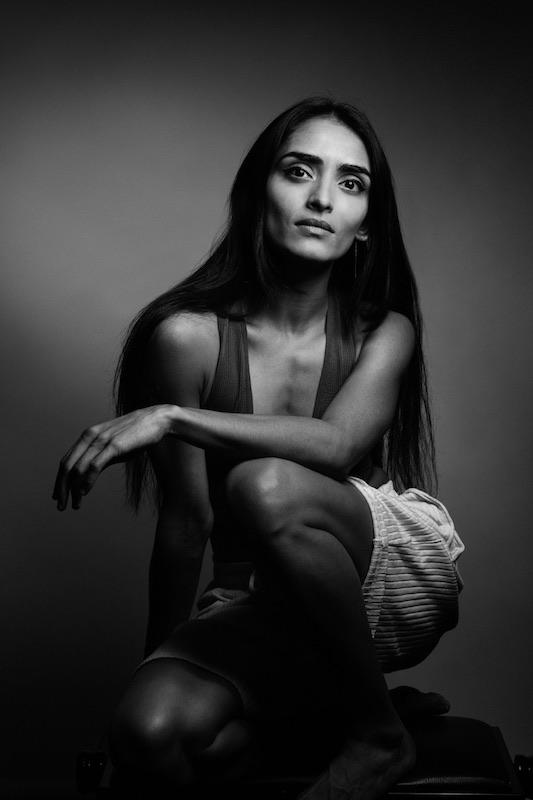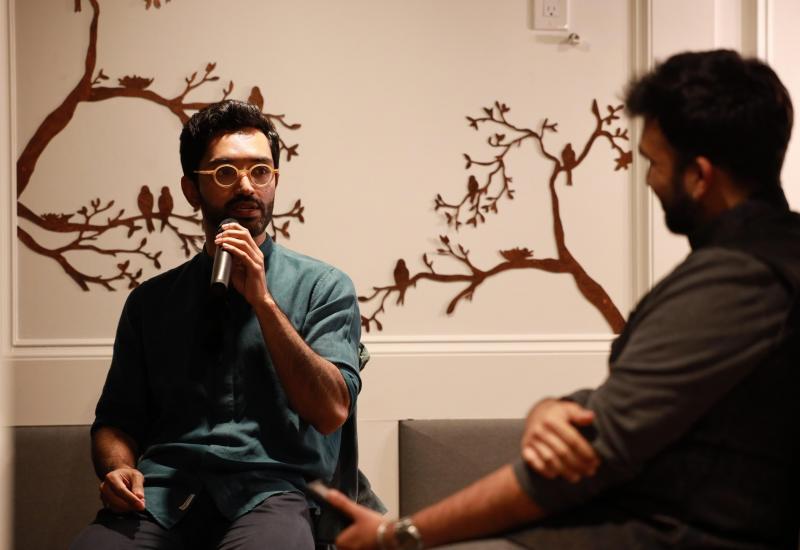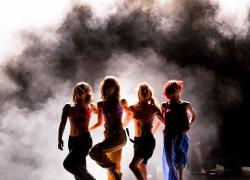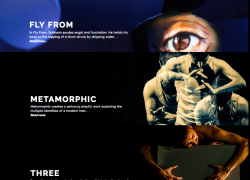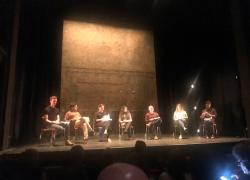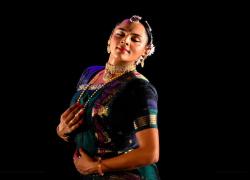In Conversation with Aishwarya Raut
Image credit: Camilla Greenwell
Reflecting on her work in The Place’s Resolution series, choreographer and dancer Aishwarya Raut identified multiple strands of influence in the creation of What About the Rain? From Mumbai to London via Liverpool, Raut’s artistic development differs from other choreographers with South Asian heritage currently making work in the UK. Rather than a classical South Asian dance background, Raut studied from the age of eight with Shiamak Davar whose blend of Bollywood, jazz and contemporary dance is taught in a network of dance academies across India. Starting dance classes at a young age helped channel her high energy, joining Davar’s junior company at the age of thirteen or fourteen. By age sixteen Raut moved into the main company, undertaking national tours while gradually being drawn to other dance styles. Faced with the need to choose a degree course, Raut opted for dance as a subject. The Liverpool Institute of Performing Arts (LIPA) emerged as an option where she was attracted by the work of Jacqueline Shi (formerly Jones) who combined jazz and contemporary dance. Other affinities would emerge as Raut became a member of Rambert, the company her mentor performed with earlier in her career.
Contemporary dance offered new creative opportunities for Raut, in addition to aligning more with her values as she gained greater understanding of patriarchal systems embedded within the Bollywood industry. Raut realised that ‘I needed other things from dance’. She gained her first exposure to improvisation at LIPA. ‘When I encountered improvisation and creating movement and what that means, it really fascinated me just how creative and free you could be with movement because up until that point, I was always sort of told what to do.’ Her first piece was created with fellow students and performed at a festival in Liverpool. After graduating from LIPA, Raut had a month-long stay in Xiamen, China, with Jones' company, then returned to Mumbai. Flying back London to audition for the Rambert 2 company, Raut was one of 800 people vying for thirteen places in 2018, in an intense process lasting four days. After performing for two years with Rambert 2, she moved into the main Rambert company.
Experiences working with a range of choreographers feeds into Raut’s processes while a Rambert Choreography platform in 2023 gave her the chance create her own work. Rather than pick the dancers in an audition-type process, she issued an invitation to her colleagues and friends: ‘I'll open it to whoever wants to collaborate and so there were nine of us and I was the tenth.’ Raut gained insights into diverse approaches of how to put something together, whether narrative, abstract, movement-focused or dance theatre. ‘Just watching and learning and working with choreographers… I picked what I liked from it and then with my experiences coming from home, I started understanding how I like to create… I know now what really works for me and a lot of it is to do with literature at home, and nature and architecture. I’m combining my experiences of coming from a very different culture… a very different environment which also then has a lot of a social-political context to it as well… I had to find my own movement because I don't want to just make movement for the sake of it. I am really interested in investigating movement,’ its possibilities ‘and not just replicate what's been done before but taking it a bit further.’
The inspiration for What about the Rain?’ is an amalgamation of diverse things but Raut spoke about a poem about a mosquito net by Marathi poet Sachin Ketkar in Skin, Spam and Other Fake encounters [Paperwall Publishing, 2011]. She pondered the mosquito and ‘our interaction with another creature that we clearly share this world with, whether annoyance, or what the mosquito then symbolises, like the world around us as the annoyance you want to escape from. You want to be in conversation with it.’ The idea of an escape into hyper-reality stemmed from the writing of French scholar Jean Beaudrillard. Working with collaborative processes, Raut ‘gave the dancers the task to come up with creatures… So all of the movements came from how they described their creature to me in a space that is familiar to them, like a spatial memory that they had…[while] a lot of the group sections came from ideas of rain and its patterns as it comes down, spills, and gets collected.’ The first solo derived from the image of an octopus interacting with a mosquito: ‘so there was a lot of entanglement, throwing yourself to the floor and sort of a lot of fluid movement quality and a lot of flow work.’ Inspiration came from the dancers, enabling Raut to build movement which ‘felt a lot more authentic rather than just making steps.’
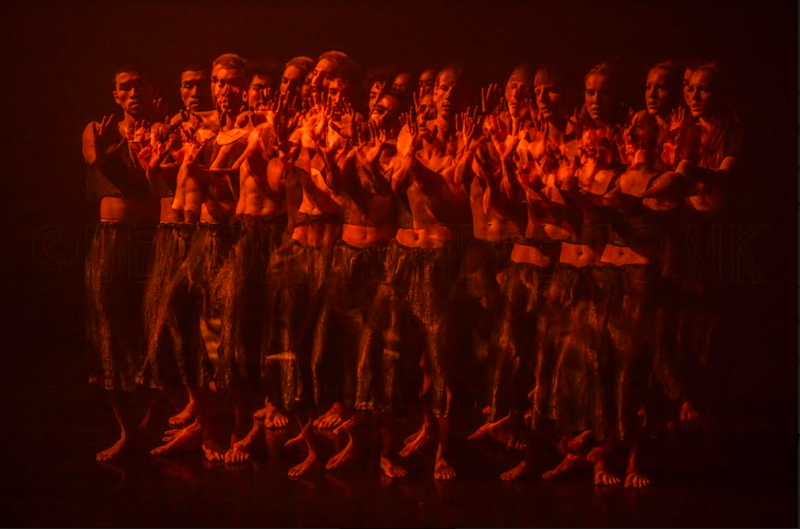
A sense of other-worldliness was heightened by the large parasol prop that shifted between functions. Carried across the stage, it served as shelter from which dancers would drop to the floor and be left behind, a place they could step in and out of: ‘I wanted some sort of world that could be separated from the dance space.’ Pulsing up and down, the action was accentuated by the long fringe, creating for Raut ‘almost like a living breathing organism of its own… [It’s like] a jellyfish or something that's going around in the rain and leaves people behind and brings people back in. But it creates this idea of the other world in which people feel safe because it's not in the rain. It is your escape, or sort of like hyperreal world or you feel safe and then it smashes away. And then you're forced to converse and be in touch with nature’. The costumes were designed by her artist sister, Sairandhri Raut, which they stitched up together during a visit to Mumbai.
Friendships fed into a highly collaborative processes with the composers of the score. A former housemate during their time studying at LIPA, Barcelona-based musician Neska composed the section that started with the mosquito’s buzzing sounds. James Smithells aka The Last Morrell toured with Rambert and shared some of his individual compositions with Raut. She was attracted to his skill in ‘scoring a scene and making something come to life’ using layers of sound. Working with an audio clip of arti songs and sounds at a Koliwada festival from the community she grew up in was integrated with recordings ‘of a bicycle in the street when it started to rain, kids running around …the soundscape of where I live in Mumbai.’ Dylan Tedaldi, who also danced in the company, created the first section, distorting a Bollywood song to reflect her shifting perspective of the industry. Raut explained, ‘I love the rhythm and the beat that it has, but I need to change it up.’ The addition of the sounds of flipping between television channels and landing on a fashion show narration hinted at ‘consumerism… and the fashion industry in India’ and the contrast between the people who make the garments and ‘who gets the credit at the end of the day for it.’ The score drew together the intense energy of the movement tapestry in a dance which conveyed the annoyances and sense of danger from monsoons for those in vulnerable environments as well as the relief and celebration when it arrives.

